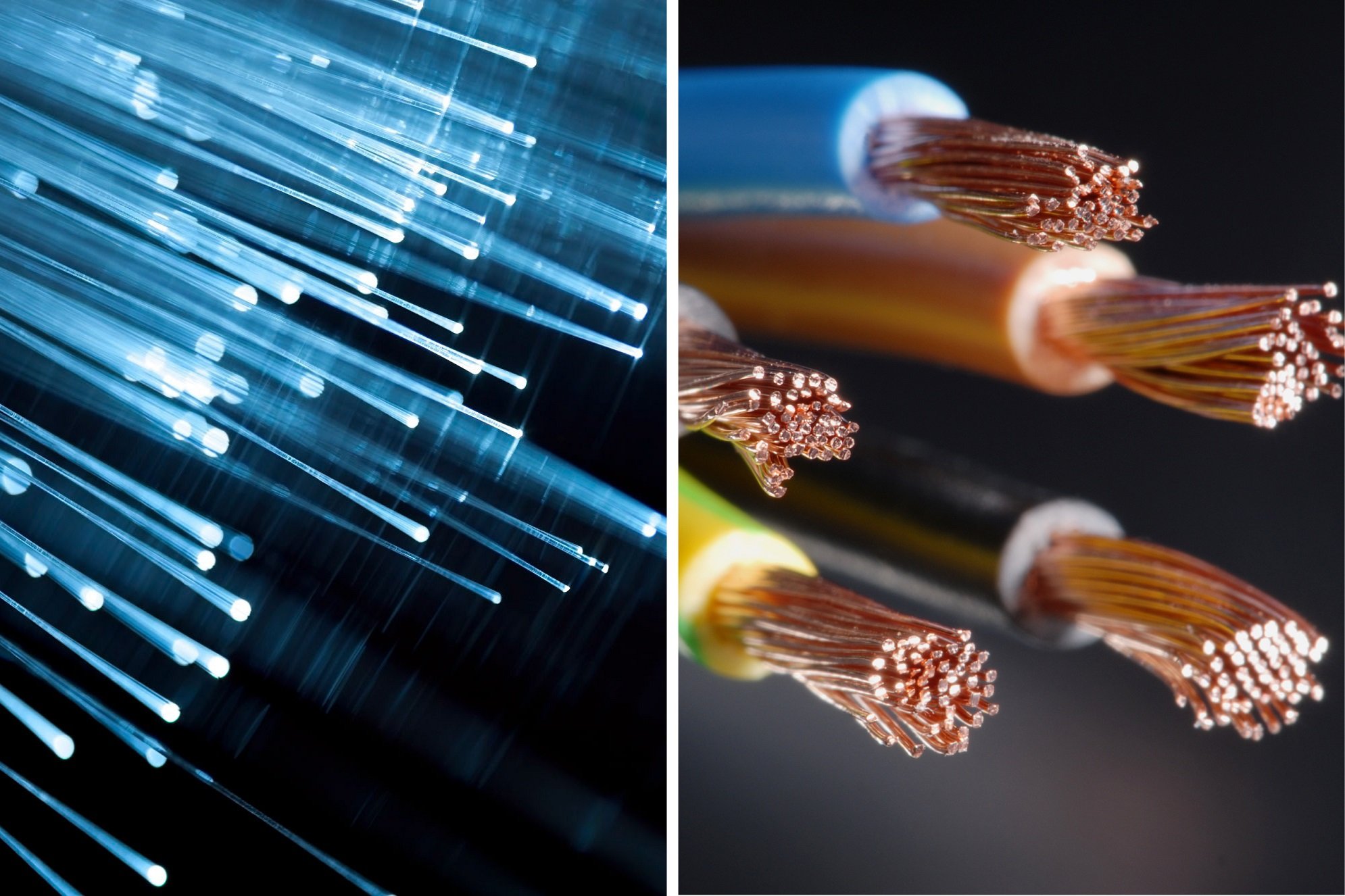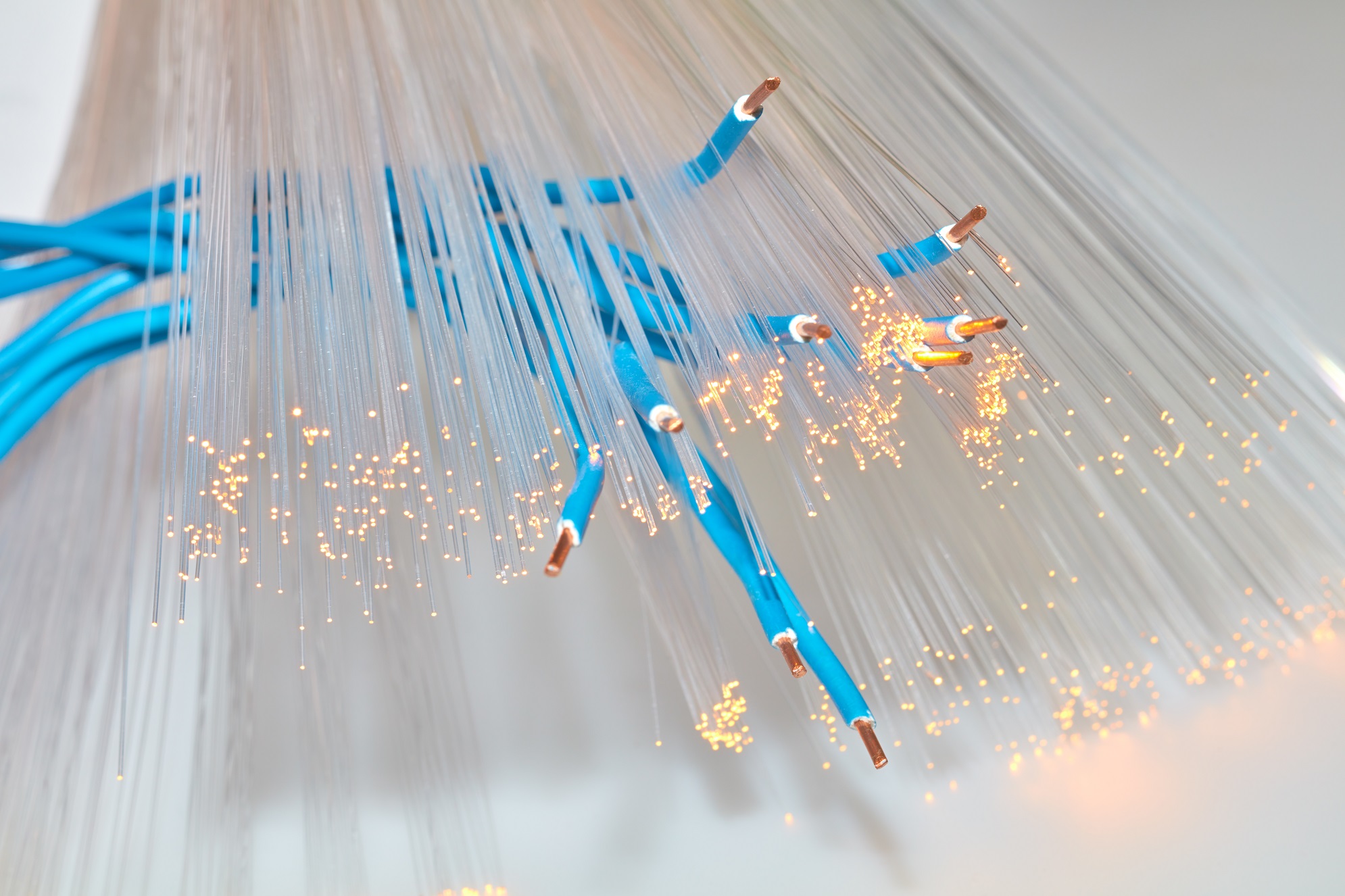What makes fibre optic cables better than copper cables?
Categories:
Telecoms
We often hear the term ‘fibre optic’ but what does it mean in terms of connectivity and what makes it superior to copper cables?
When it comes to building a new or upgrading a cabling infrastructure there are two technologies, copper and optical fibre. Which one you use will depend on certain factors, including current network infrastructure, distance, environment, future network requirements and costs.
Fibre optic Vs copper cable

Fibre optic cable is becoming an increasingly popular choice over copper cables for both new cabling installations and upgrades. It is especially popular in applications where huge amounts of data are transmitted. But what is causing this shift?
There are several reasons why fibre optic cables are considered better than copper cables.
Speed and distance
Firstly, fibre optic has a much greater bandwidth than copper and has a proven to reach rates of 10 Gbps and above. Fibre optic provides over 1,000 times as much bandwidth as copper and can travel more than 100 times further. Fibre optic cables can also carry more information with greater reliability than copper wires.
Signals emitted from fibre-optic cables are made of light, which means there is very little signal loss during transmission. As a result, data can move at higher speeds and greater distances. Signals can travel along fibre optic cables from 550 meters for 10 Gbps multi-mode, and up to 40 kilometres for single-mode cable. This is because fibre does not have the 100m distance limitation found in unshielded twisted pair copper without the use of signal boosters. Although fibre optic signals do not travel at the speed of light, it is approximately only 30% slower – which means it is still extremely fast. In comparison, the electrons used in copper cables typically travel at below 1% of the speed of light – a significant difference.
EMI
Fibre optic cables are immune from electromagnetic interference and radio-frequency interference (EMI/RFI), which means that unlike copper cables, they can run alongside industrial equipment without any electrical interference which leads to signal loss. As the signals need less boosting than copper ones, fibre optic cables perform better.
Cable handling
Due to its small size, the cable is much easier to handle and takes up less space in cabling ducts. While it is still more difficult to terminate fibre optic cables, advancements are being made in the connectors that would make the termination procedure easier.
Security
Interestingly, data is much safer in fibre-optic cables compared to copper cables and this is down to the material of the cable itself. Fibre optic cables do not radiate signals and are very difficult to tap. If there is a breach in security, it’s easy to monitor as the fibre disperses light. When this happens, the whole system fails.
Environmental factors
Optical fibres are made up of ultra-thin strands of glass, and because glass is an insulator, no electric current can flow through. This makes it immune to the environmental factors that can affect copper and provides more reliable data transmission. Additionally, fibre optic technology is less susceptible to changes in temperature and can even be submerged in water, whereas a major disadvantage of copper is that it is vulnerable to corrosion given its tendency to oxidise even at relatively normal temperatures causing copper to degrade quicker. The lifespan of optical fibres far exceeds that of copper.
Costs
In the short-term, fibre optic cable generally costs much more than copper cable. However, when considering the installation and maintenance costs that would be necessary in the long-term there are more cost benefits to implementing a fibre optic network. Due to shorter downtimes and less networking hardware, fibre optic cables inevitably provide a more economic networking solution what would offer greater value for the investment.
Prysmian telecoms: linking the future
Prysmian is the world’s largest provider of cutting-edge telecom cables, linking people to voice, video and data transmission. We are at the heart of a network of world-leading telecom operators. From optical fibre and optical and copper cables to connectivity components and accessories, we’re helping to link communities, continents, and countries faster and more efficiently than ever before.
Our global presence, combined with our experts’ regional knowledge, mean we’re uniquely placed to support the needs of every customer. Whether that’s manufacturing high-performance and cost-effective data cables within tight lead times or offering specialised network solutions which enable high-speed connectivity in the core network, within datacentres, or at the edge, our expert knowledge and high-quality products can deliver the perfect solutions for you.
We provide pioneering global opportunities for industries and communities. Find out more about Prysmian Group’s Telecom cables and solutions and our product range.



